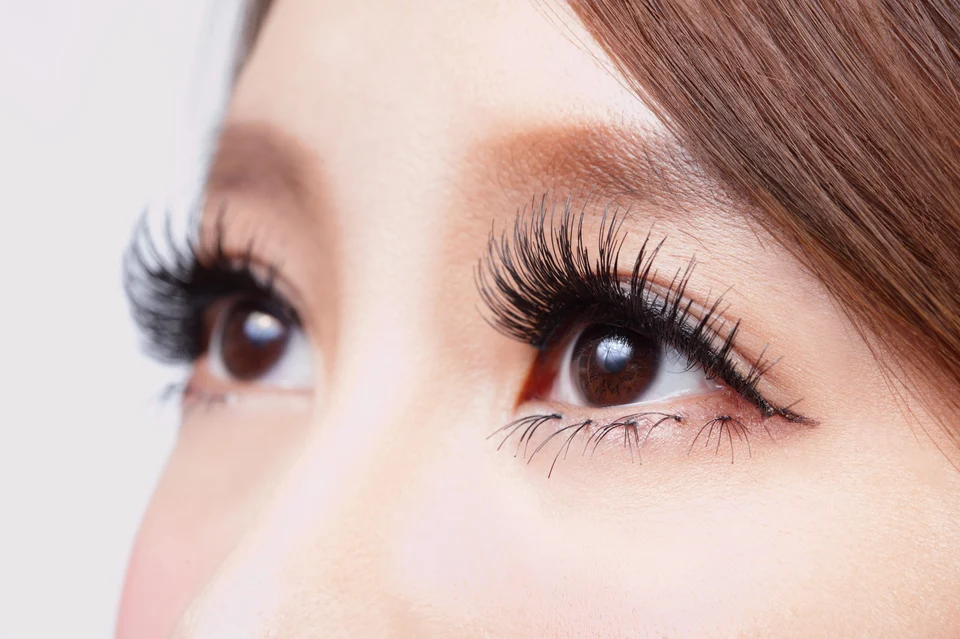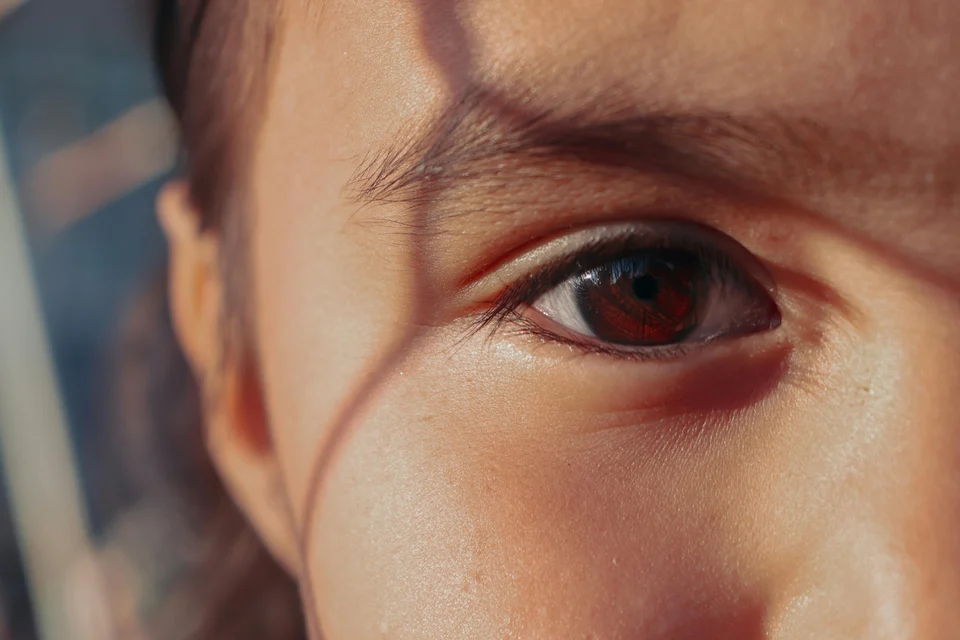How to Get an Eyelash out of Your Eye: 5 Simple Steps To Try
A rogue eyelash can seem trivial until it hits your eye. That tiny strand can cause instant discomfort and an urge to rub, which only makes things worse.
Fortunately, there are safe and effective ways to remove it without risking irritation or injury. In this guide, Napricot will walk you through every step and show you how to get an eyelash out of your eye.
How to Get an Eyelash out of Your Eye
Locate the Eyelash
First, find the lash so you won't have to work blind later on.
Stand at a sink with bright light and a nearby mirror. Pull your lower lid down while looking up, then lift your upper lid while looking down; that way, you can scan both the lower cul-de-sac and under the upper lid margin.
After that, slowly move your gaze left, right, up, and down. This eye movement often shifts a hidden lash into view, especially at the inner or outer corner.
And if you suspect it's tucked under the top lid, look down and gently lift the upper lid against the brow bone; a flashlight from your phone (aimed indirectly) can help you spot the glint of the lash.
Only once you have a rough idea of where it sits should you move on to learn how to get out an eyelash in your eye. I've found that even 20 to 30 seconds of careful searching saves several minutes of frustration later!
Blink to Dislodge
After you've spotted the lash, it's time to try dislodging it naturally.

Blink repeatedly while moving your gaze in different directions (up, down, side-to-side). The tear film you produce as you blink can float the lash toward the inner corner, where it's easier to lift away without touching the eye at all. And if you wear contact lenses, remove them first so the lash isn't trapped beneath a lens.
You can also give this trick a try: a focused 30–60 seconds of blinking, combined with eye movements, often succeeds without any tools. More than once, I've reached for cotton swabs, only to have a few strong blinks sweep the lashes out on their own!
Wash Your Hands
What if blinking doesn't clear it? In that case, you may need to get close, so clean your hands thoroughly first.
Wash with soap and warm water for at least 20 seconds (don't forget to pay attention to fingertips and under the nails!), then dry with a clean towel or paper towel.
More than just a hygiene process, this step significantly reduces the risk of introducing bacteria and turning a minor irritation into a more serious problem. I once rushed past this, and my eye stayed red and gritty for hours; lesson learned.
Rinse with Lukewarm Water
With clean hands, you're ready to move on to the next level of action: flushing. This method is especially helpful when the lash is still not visible but continues to irritate.
Use lukewarm (not hot) clean water or sterile saline. The easiest technique is to fill your cupped hands, lower your open eye into the water, and blink gently so the fluid washes across the surface.
Alternatively, use an eye cup or a saline squeeze bottle to create a gentle stream from the temple side toward the nose, allowing the lash to ride the flow to the inner corner.

Keep the stream steady and blink naturally for 20 to 30 seconds, and repeat as needed, up to a few times. If you're away from a sink, sterile saline or preservative-free lubricating drops are perfect on-the-go stand-ins.
Remove with a Damp Cotton Swab
If rinsing fails and you can clearly see the lash, now's the time to intervene with care.
Lightly moisten the tip of a clean cotton swab with sterile saline or cooled boiled water; the slight dampness helps the lash adhere to the fibers. Then, looking in the mirror, gently pull the skin at the inner or outer corner to create space. Approach the lash slowly and let the moist swab touch just the lash so it sticks. Then, lift away without scraping the eye.
Remember to avoid poking or "fishing around" blindly; if you can't see it, go back to rinsing instead! I only use the swab when the lash is plainly visible; cautious, deliberate movements make this quick and irritation-free.
Extra Notes for Children
Needless to say, helping children requires even more patience and care. If your child has a lash in their eye, don't use fingernails, tissues, or anything sharp to retrieve it.

First, gently wash your hands, then encourage them to blink and look up, down, and side to side. Try flushing the eye with lukewarm water or sterile saline using a clean dropper or a gentle stream. This approach alone often does the trick.
And if the lash is visible and resting at the inner corner, a very lightly moistened cotton swab can help lift it out, but only if the child stays still and cooperative. Turning the process into a small game (like "follow my finger with your eyes") has helped me get my niece to focus and stay calm.
Can You Sleep with The Eyelash Still in Your Eyes?
Surprisingly, yes. In most cases, it's perfectly safe to sleep with an eyelash still in your eye!
Sure, it's uncomfortable, but the eye is equipped with a natural self-cleaning mechanism that continues to work even while you sleep. That's why you often wake up with a bit of crust near your lashes: your tear film and blinking during sleep help push out irritants like dust, debris, and yes, even stray lashes.
I've had a few nights where no amount of rinsing worked, but by morning, the lash was either gone or had shifted to an easier spot to remove. Just resist the urge to rub your eye in the meantime, since it's what causes you actual harm, not the lash itself.
Common Mistakes to Avoid
Regarding how to remove an eyelash from the eye, make sure you don't do any of these:
- Rubbing your eyes: This habit may feel instinctive, but it causes more harm than good. Rubbing increases the risk of scratching your cornea and making the irritation worse.
- Using sharp or dirty tools: Never reach for tweezers or fingernails. They’re not precise enough and can easily injure the eye or introduce bacteria.
- Ignoring persistent symptoms: If discomfort lingers beyond a few hours or worsens, don’t wait it out. In fact, early professional care helps prevent complications such as infection or corneal damage.
When to Seek Help
Though most stray lashes resolve on their own or with gentle at-home care, persistent discomfort, redness, swelling, or blurred vision are red flags. These symptoms may indicate a scratch, infection, or a more serious underlying issue that requires medical evaluation.
So, if the irritation doesn’t improve or worsens after an hour or two, it’s time to let an optometrist or ophthalmologist take over.
FAQs
What happens if I can't get an eyelash out of my eye?
If an eyelash stays stuck, it might persistently irritate the eye or, if left unchecked, scratch the cornea (though it's usually harmless if it's soft and small). If blinking, rinsing, or other gentle removal attempts fail, it's smart to seek help from an eye care professional to prevent potential damage or infection.
Will an eyelash eventually work its way out?
Yes. Your eye's natural flushing mechanism, including blinking and tear production, often removes eyelashes on its own over time.
How to remove an eyelash from your eye naturally?
The safest approach is to blink repeatedly and use tear drops or sterile saline to gently flush the eye. Even laying your eyelid (upper over lower) or using a clean water rinse can help the eyelash move out without touching the eye surface.
What if an eyelash disappeared in the eye?
Often, a "vanished" eyelash has simply been washed into a corner by your natural tear flow and is likely on its way out or stuck in an easier-to-access spot. The tears and blinking work together to keep your eye clear, and the eyelash typically ends up falling out on its own.
How to remove an eyelash in your eye without touching your eye?
You can gently flush your eye with sterile saline solution or lukewarm water. Tilt your head, pour the liquid into the inner corner, and blink to help nurture the lash out safely.
Conclusion
In most cases, a stray lash is more annoying than dangerous, and your eye’s natural defenses (blinking, tearing, and flushing) will do much of the work if you give them a chance.
That said, knowing how to get an eyelash out of your eye safely can make a world of difference in both comfort and outcome. And if discomfort lingers longer than it should, don’t second-guess it: professional help is just a call away!